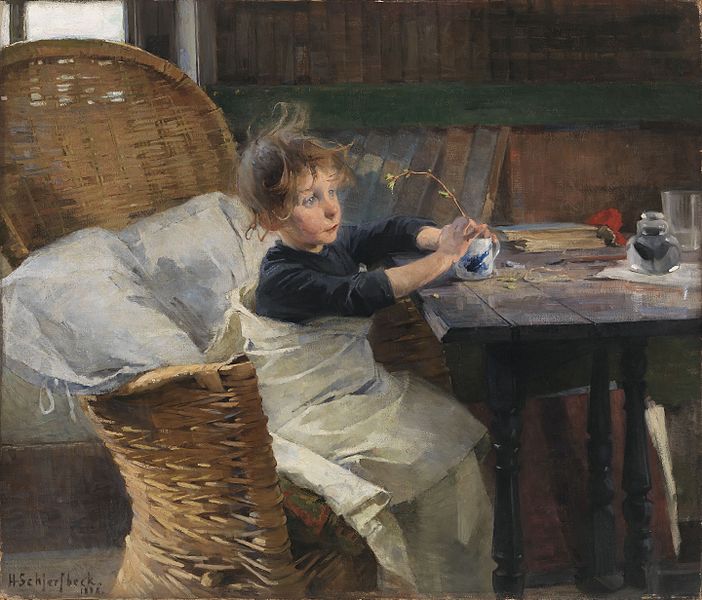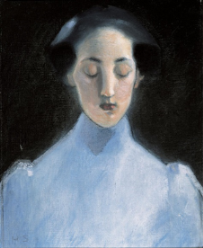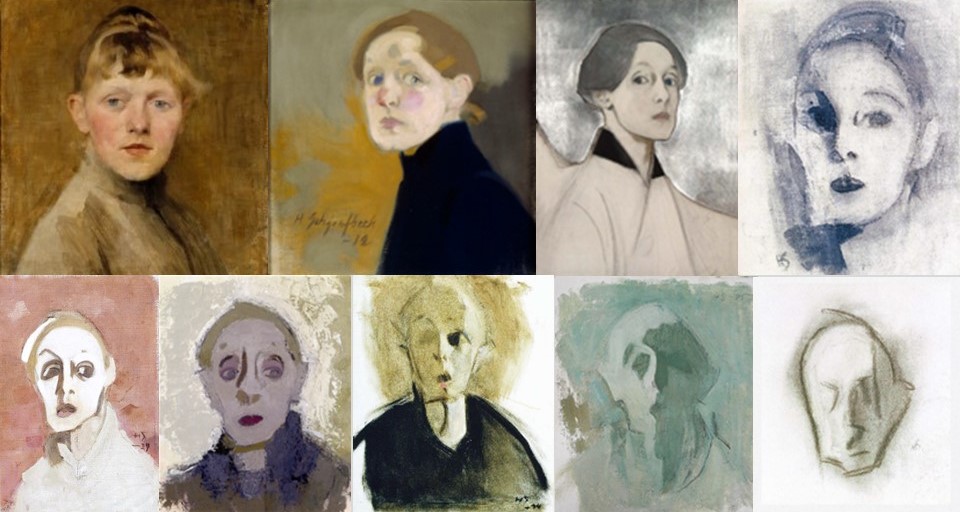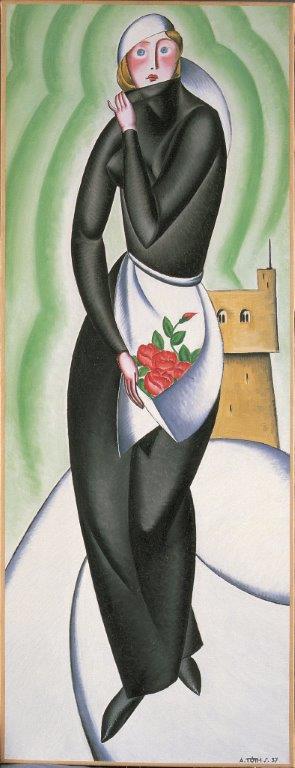I would really like to know what your first thoughts were when you saw this self-portrait. What does this picture communicate and why? What would it be like to encounter this person in real life? Theoretical questions, of course, yet interesting to ponder them for a moment before you learn a little more about the life and circumstances of the maker.
Ever since I saw Helene Schjerfbeck’s (1862-1946) oeuvre exhibition in Helsinki at the end of the 1980’s, I have carried several images created by her in my heart. I am intrigued by the story of this celebrated Finnish painter who only recently has gained international recognition.
Being an unmarried female professional painter in the last quarter of the 19th century was a challenge in itself. Especially if you did not stick to the sweet and conventional still lifes women were expected to excel in (preferably as a hobby). This was the time when Ibsen’s A Doll’s House was played at the Finnish Theatre (1880) and major discussions on sexism were the topic of the day. Although the inequality of the sexes in the period would suggest otherwise, in the first five years of the existence of the Finnish Arts Society’s Prize only one male was awarded. The reason for that may have been that painting was not a great source of income. Selling artworks, teaching and copying masterpieces for museums were the only options to earn one’s living.
Helene was a talented little girl. After her encouraging father died when she was 13, her teacher helped her find grants to support her in her education. As a teenager she painted Wounded Soldier in the Snow (1880), a breakthrough then as women were not supposed to depict war. With the help of the turmoil around this painting she was given a travel grant to Paris in 1881. From then on several great study trips and grants followed.
Helene was greatly inspired in Paris, Florence and Cornwall. Everyday life became the focus of her study. She often did things differently than the mainstream. Her Boy Feeding his Little Sister was deemed by some as ‘not worthy’ to the lofty purpose of art. Her painting was considered not pretty enough. It was the time of the discussion about ‘good’ realism (often showing health and beauty) and ‘bad’ naturalism and many art critics loathed the modernists, who painted everyday scenes in new ways: with close ups, fragmentation or incompleteness.

In 1888 Helene painted The Convalescent, one of the treasures of the National Gallery in Helsinki today. It depicts a fragile (and very cute) sick child. She is holding a spring twig, which tells us that she is getting better. In this scene Helene (who never became a mother) captured something of the parent’s relief when a child begins to recover after a threatening illness. An image of hope, for sure, and atypical for modern painting.
Her unusual pioneering talent showed in landscapes, simple interiors, even still lifes, but most of all in sensitive portraits. There is a serene solitude and tranquility in her painting Hiljaisuus (Silence) from 1907. The subjects of the portraits often look down or aside, introvertedly and discreetly.

Through her career she painted at least 36 self-portraits. I remember my astonishment as a young adult, when I saw a part of this collection for the first time. Being confronted by a powerful yet due to illness fading human being will touch any spectator. We are used to selfies now, but these images communicate so much more than just resemblance. Her strong identity clearly radiates through from early on. The Self-Portrait with Black Background (see above at the top) was commissioned by the Finnish Art Society in 1915. Helene was pleased to be the only female participant. She painted herself in a strong self-conscious pose on a black background with a red pot of brushes. Her name features in block letters across the canvas, old-master-style. It is a noble look, fragile and feminine (loose lock of hair) yet authoritative, knowing where she stands and what she is worth. Unnerving too.
The sequence of self-portraits below shows an intimate inquiry. She kept observing and painting herself while she was slowly dying of cancer. It also shows her unique development. She freely explored different mediums and ways of portrayal. Her will to investigate is shining through the soulful images.

During her last years her gaze turned slowly downward, her youthfulness beaten. Her body was turning into dust but her urge to create was not defeated. A few strong charcoal lines cover up her powerful character and indicate a death mask just a few days before she died. She captured her own passing away. It is resignation and mutiny at the same time. A beautiful and profound way to go. She keeps touching hundreds of thousands of spectators worldwide.
*
This blog was published earlier, on 1st September 2019, as an ArtWay Visual Meditation.
*
Images: Helene Schjerfbeck: Mustataustainen omakuva (Self-portrait with Black Background), 1915, oil on canvas, 45,5×36 cm. Toipilas (The Convalescent), 1888. Hiljaisuus (Silence), 1907. Self-portraits: 1884, 1912, 1915, 1926, 1939, 1942, 1944, 1944, 1945.

